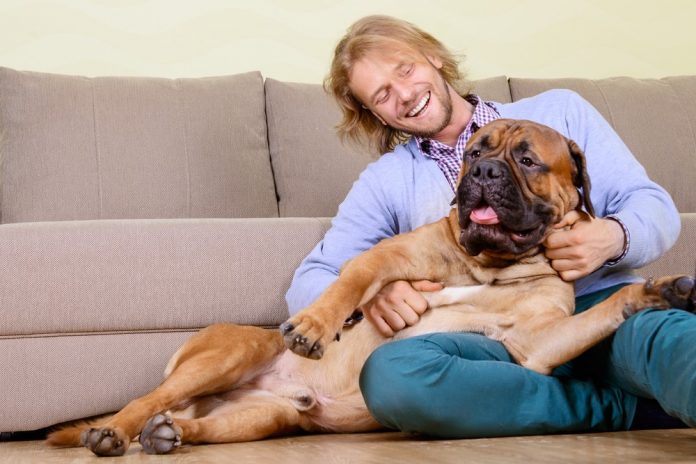Canines adjust well to difficult and unknown circumstances—one reason they’ve endured us for such a long time. While living with a large dog can be inconvenient, there is no reason why you should let it stop you.
We are here to help you with the proper tips you need to make your small room comfortable for both you and your dog.
1. Routines Are Crucial
Dogs are just like us, creatures of habit. They will be comfortable in their ways unless you try to actively change it. You need to have a timetable for everything.
By everything I mean E-V-E-R-Y-T-H-I-N-G! From their wake up call to their potty time, everything should be done according to the routine. That will help with their hunger and their resting and active period.
But you need to put in a lot of effort as they get accustomed to their routine.
2. Exercise!
What is the first thing your dog is missing when you are both cramped in a small space? Stretching area of course! Basically, a worn out canine is a decent and composed one.
Veterinarians concur that large dogs would be happy as long as they have enough time in a day to satisfy this critical need.
But how much exercise is sufficient for him/her? It truly relies upon your dog and as his/her parent, you’re in the best position to know. For instance, an hour of fiery, heart-pounding exercise each day of the week is generally enough. You will be able to tell by their restlessness if they need more.
Numerous large breed dogs, in reality, are calm and inert during their grown-up years, and most grown-up canines are in resting period for more than 12 hours per day.
As often as you can, try to take that frisbee out. Both you and your dog will get that exercise you need!
What If I Don’t Have Access to an Open Field?
Genuine cardiovascular exercise means going for a run, going for a long stroll on a trail or city scenic route, or taking part in a dynamic open-air play with your canine.
If you are unable to provide the time/ you live in a cramped city, you can always hire a dog walker or avail the services provided by doggy daycares.
3. Your Dog Needs to Be Active Inside Too
Try to get your dog toys that cannot be chewed on or torn apart. Dogs tend to consume anything they can chew and it can be a health hazard. Get them toys they need to be active to play with. Interactive dog balls, IQ treat balls are great options for such purpose!
4. Give Space to Your Pooch!
You might think just a dog bed with a cover is enough but playpens are far better at making them feel at home. Doggy playpens help them feel independent and calm- especially if it’s a big dog.
If you don’t have enough space to set up a whole corner, you can make do with a couch in your loft as your canine’s space (utilize a furniture spread or pooch cover to secure it).
Permitting him onto the furniture will enable him to feel less limited in your little home.
5. Which dogs will most make the most of your little living space?
Guarding or sighthound categories most easily adapt to their surroundings, for instance, the Mastiff and the Greyhound. These dogs like to remain still and in a calm environment.
The Greyhound, otherwise known as ‘The couch potato’, has earned notoriety for being a low-vitality hound.
6. Be Practical
Living in a cluttered space calls for mishaps. So be prepared for any accidents related to territorial or enthusiastic breeds. Big dogs often have navigational hazards and even when they are being obedient, they can cause a lot of damage just because of their size. Try not to be overwhelmed and keep your valuables secured in a manner so they cannot get to it.
Final Thoughts
I would like to end by saying yes, it is a lot of responsibility to have a large dog in a small space. So you need to check with yourself whether you are up for it or not. But don’t let the mound of responsibility scare you if you have decided to welcome a big pooch home. With just a little work, you can make your home a welcoming space for your pup!
























